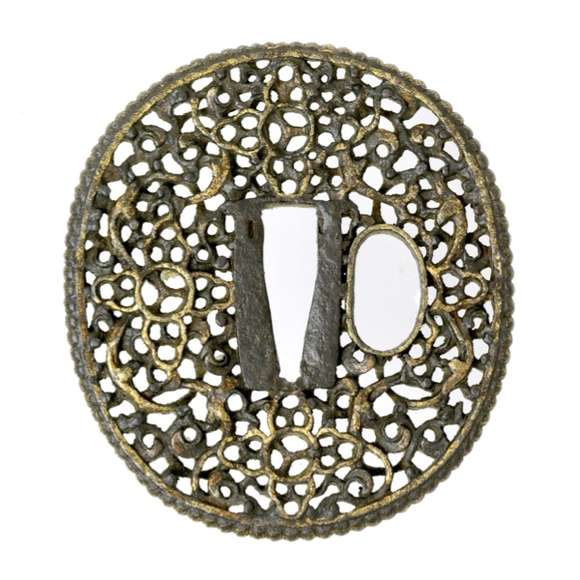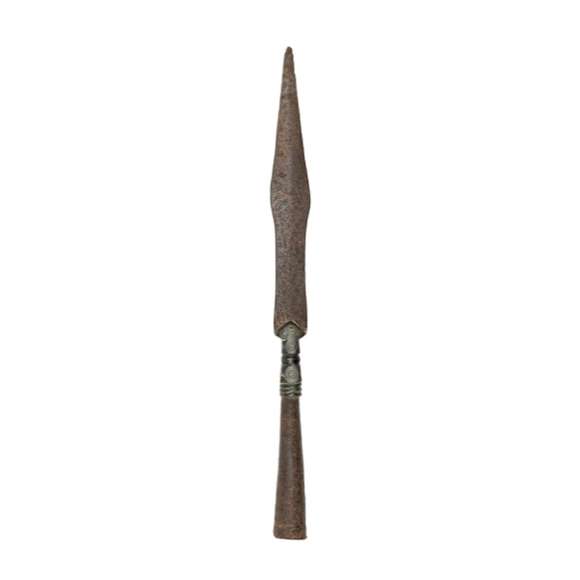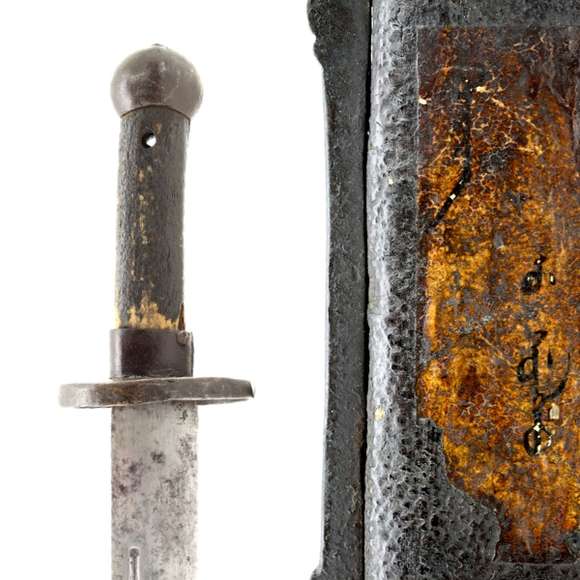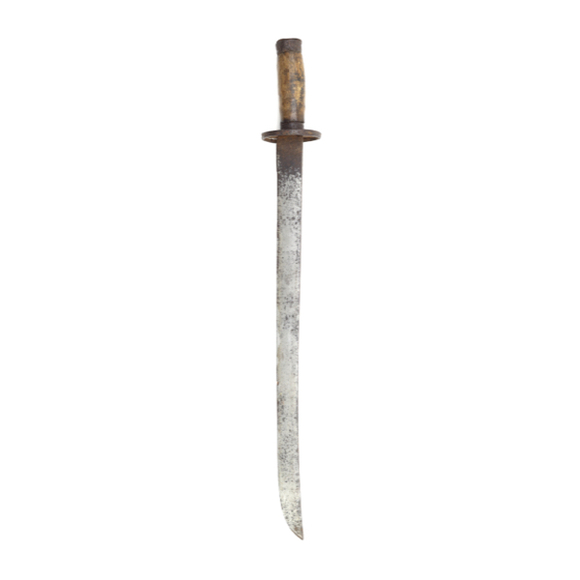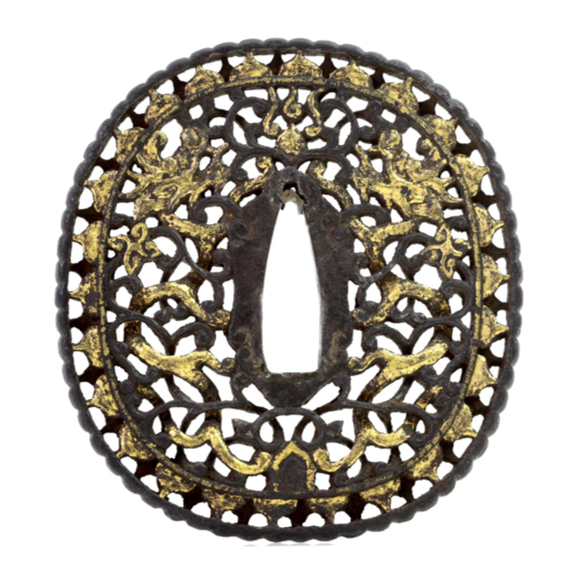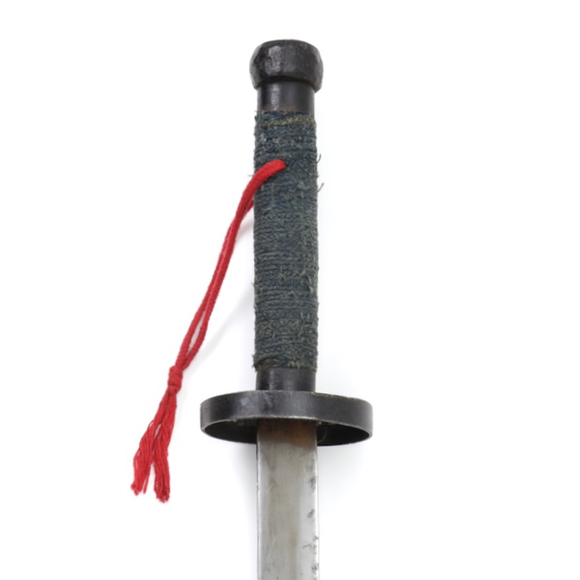A very rare Chinese saber guard dating from the height of the Qing dynasty.

42.5 cm
40.5 cm
forte 8 mm
middle 6 mm
near tip 3 mm
forte 18 mm
middle 16 mm
near tip 15 mm
346 grams
196 grams
Qing dynasty, China.
Steel, iron, brass, bone.
19th century
Background
Sets with a knife and chopsticks -and sometimes some other utensils- were common all over the Qing empire. The various cultures that coexisted within this realm gave their own twist to the design. Under the Qianlong emperor the wearing of these sets became mandatory for all Manchus and Mongols. The rationale was that these knives facilitated the traditional nomad style of meat eating, cutting it straight from the bone. This was in contrast to the Chinese method of eating, where the food was pre-cut into bite sized pieces that could be eaten with chopsticks. In an attempt to preserve the rough outdoor nature of the Manchu and Mongol lifestyles under the Qing, it was illegal for them to have their meat pre-cut. And so, all Manchus and Mongols were required to wear these trousse sets to eat their meat in a traditional way.
Description
A fairly large Chinese trousse with a thick, rather heavy blade for the type that starts with a thickness of 8 mm. The long, narrow blade with a single wide groove and ridged spine. One side is engraved, the other with heavily stylized inlays of facing dragons chasing a flaming pearl, or "sacred jewel". The handle and scabbard are entirely made of bone that was dyed green. All fittings are made of sheet iron, inlaid with brass designs.
Unfortunately the chopsticks and two other utensils are lost.
Conclusion
A very large and good quality Chinese trousse set with heavy blade and inlaid iron mounts.

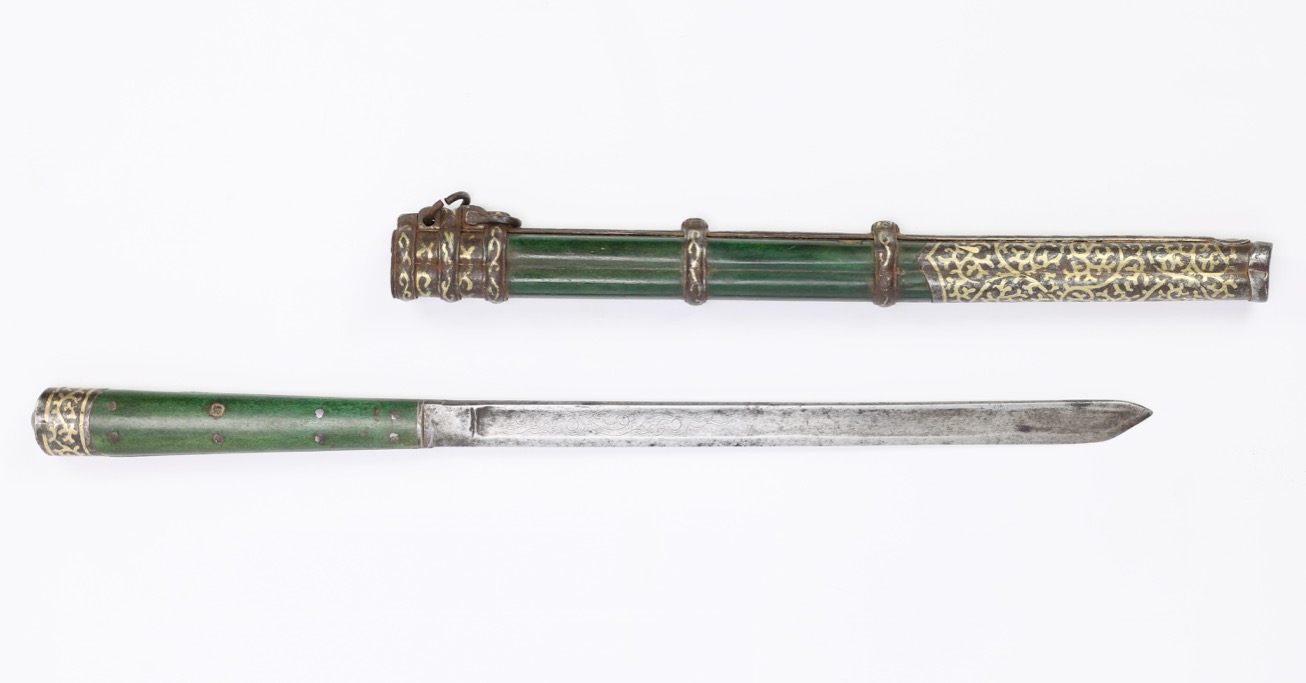

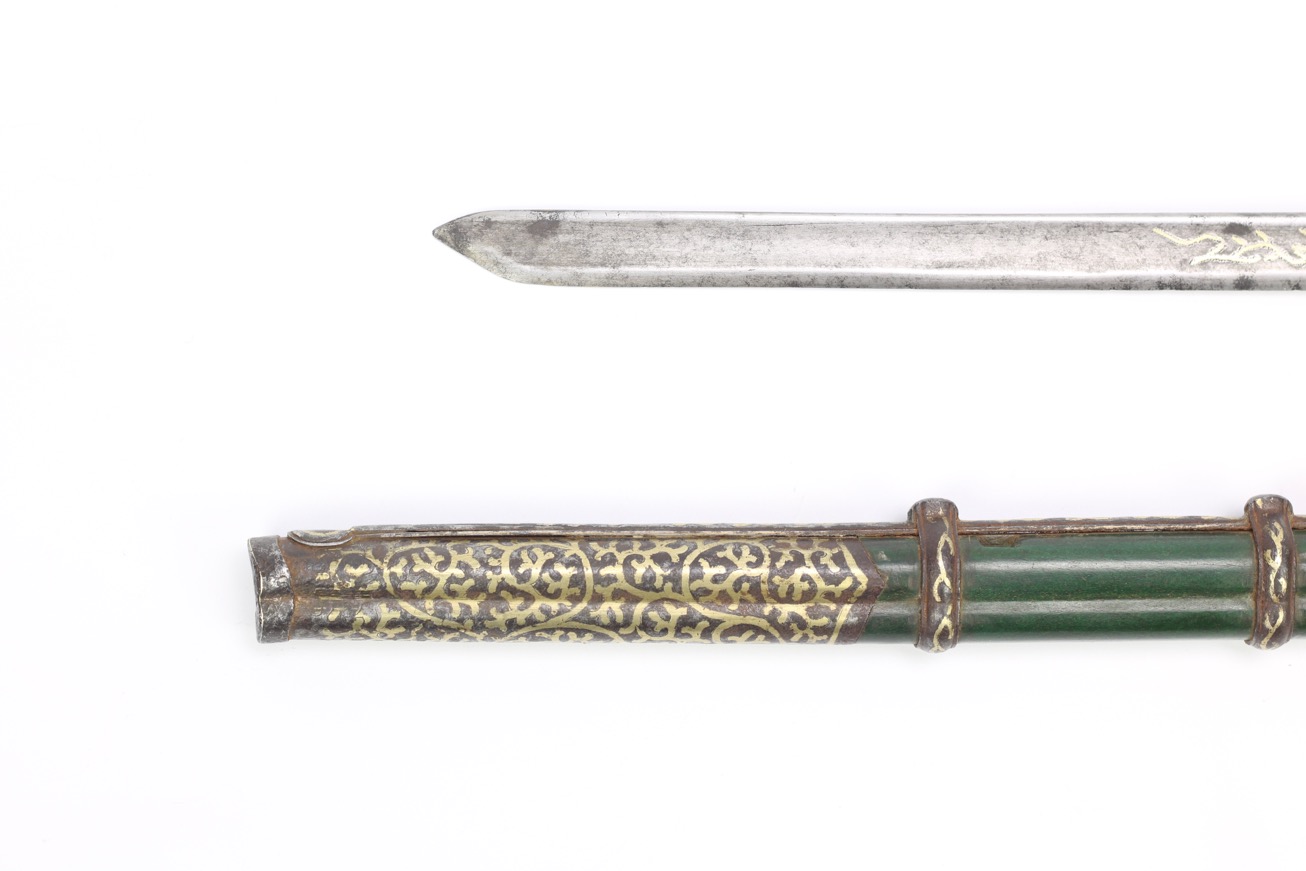
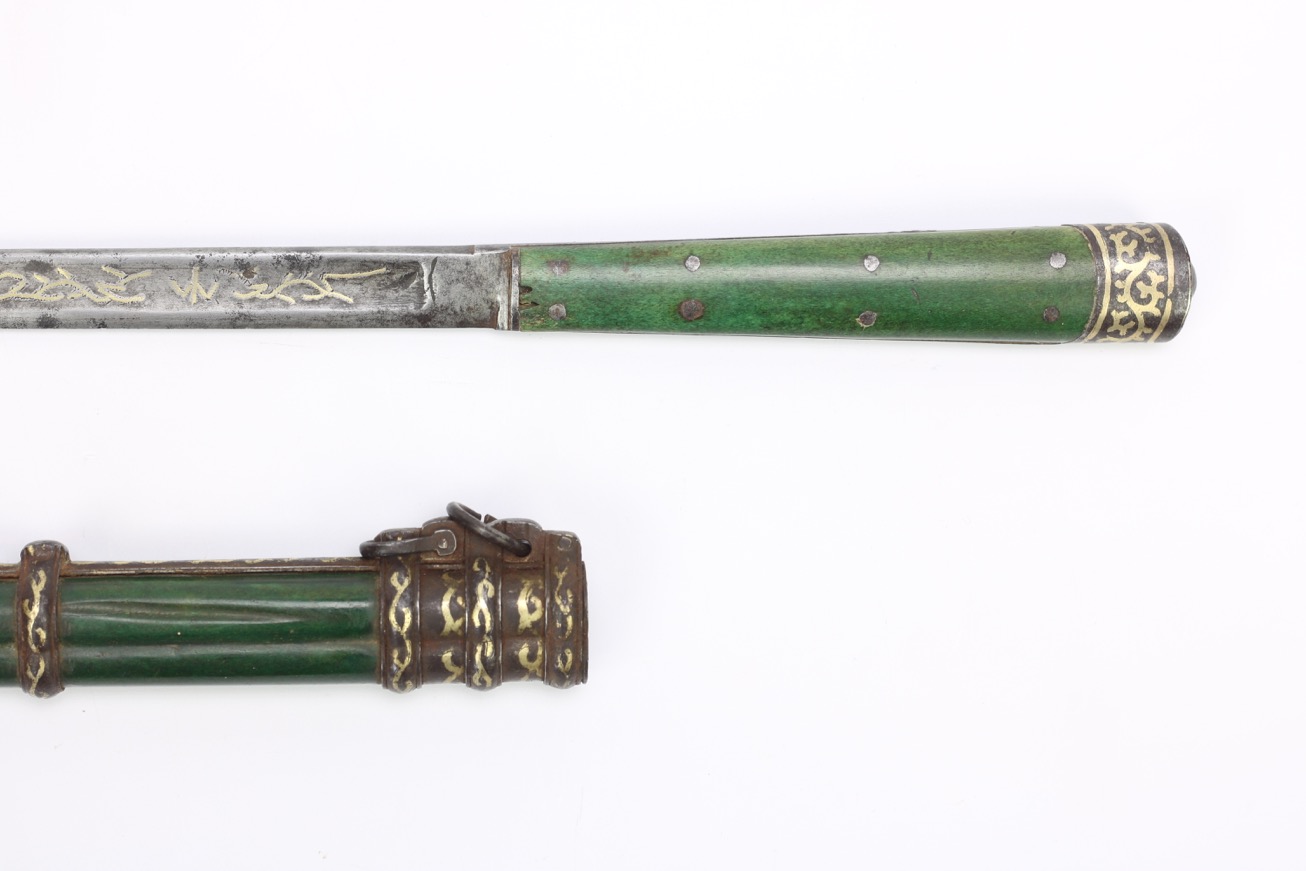
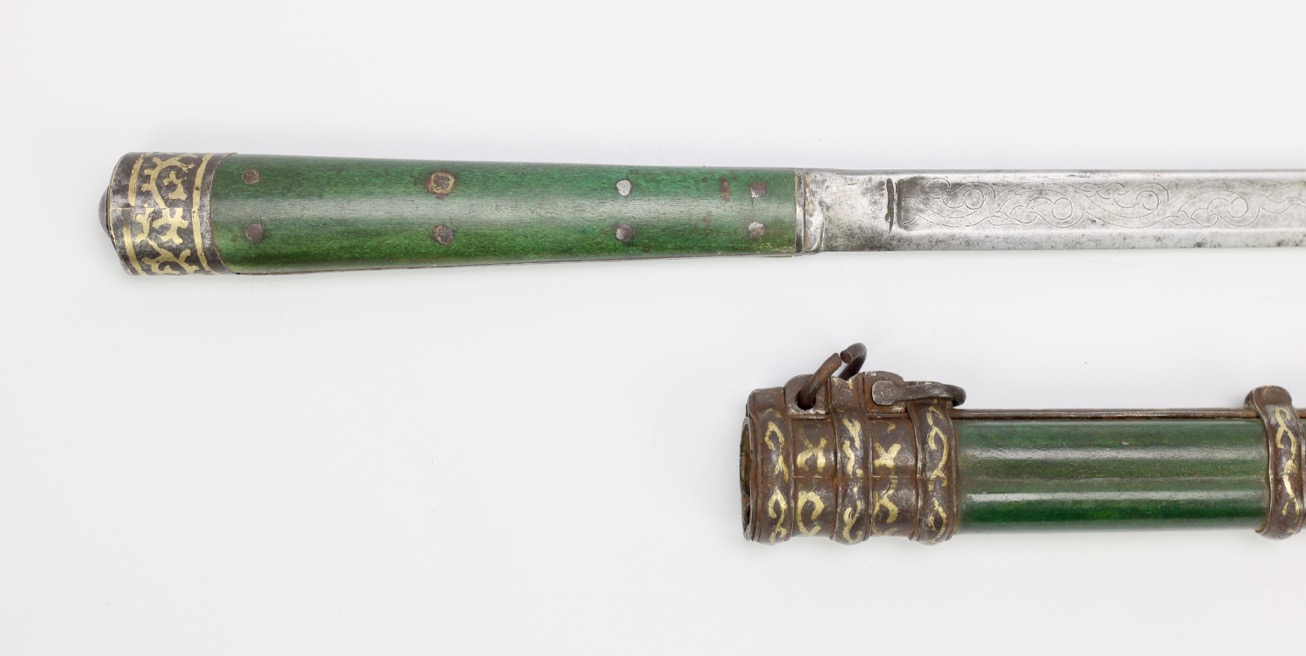
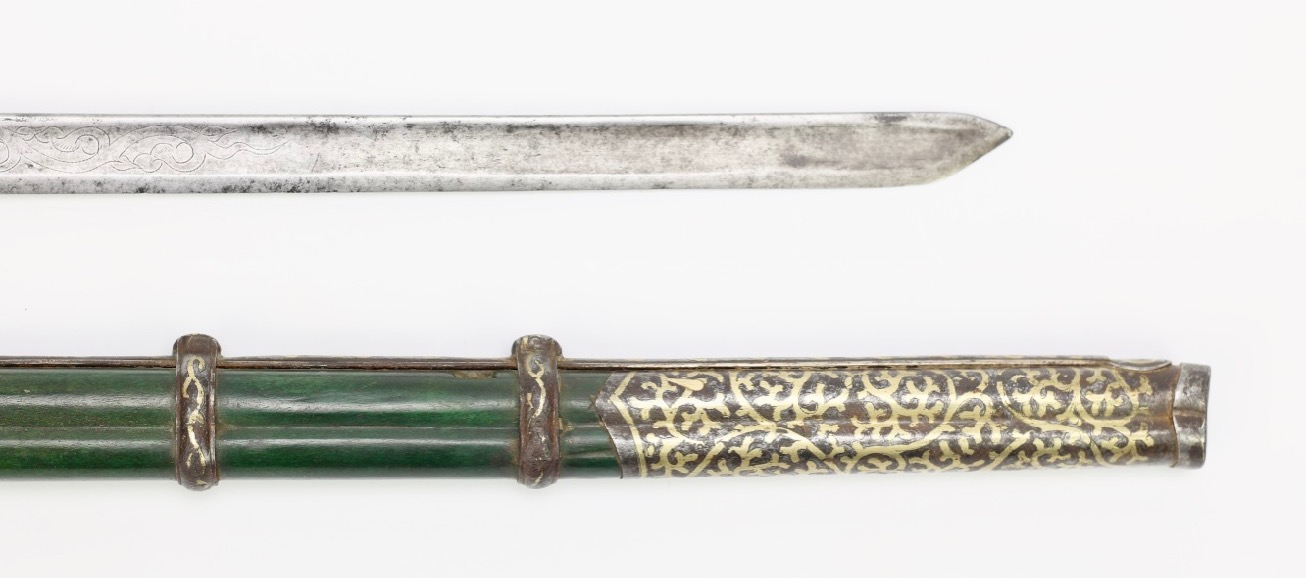



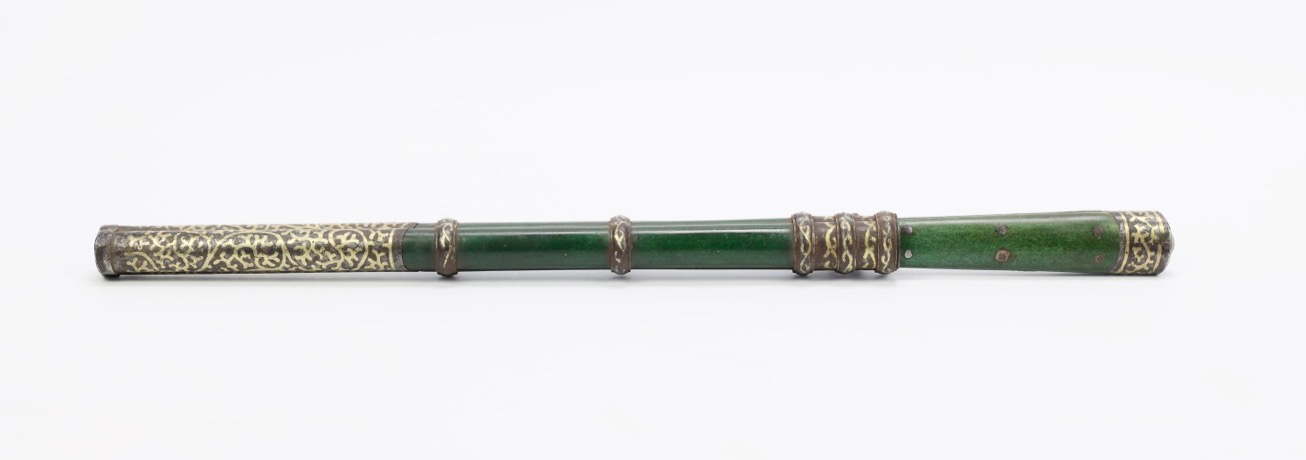
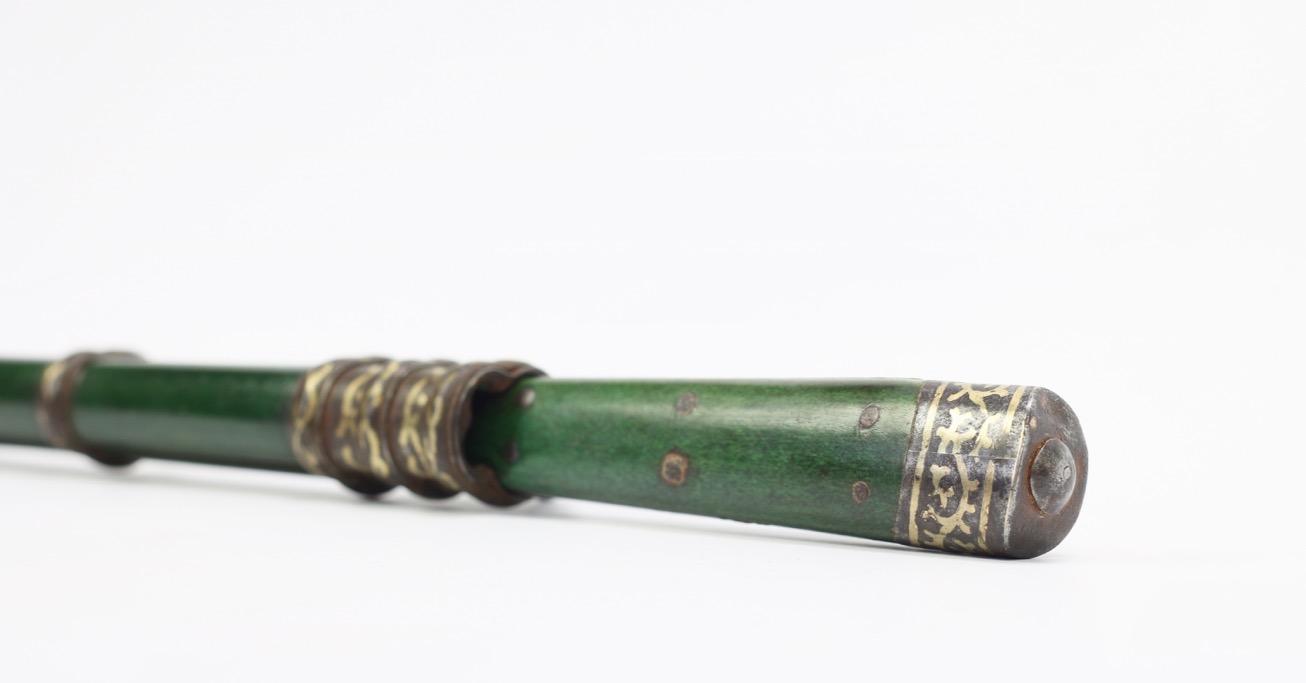
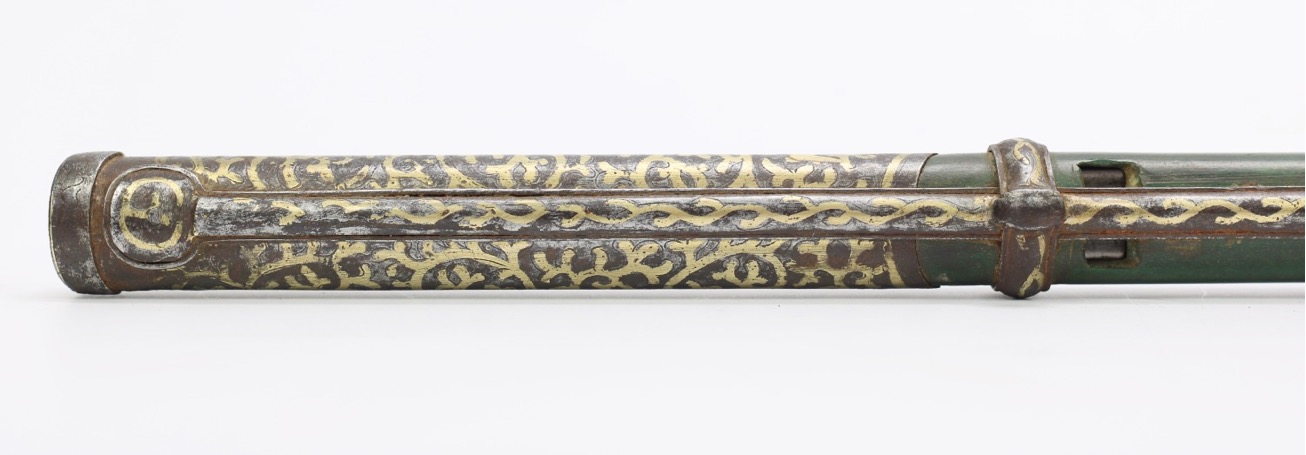
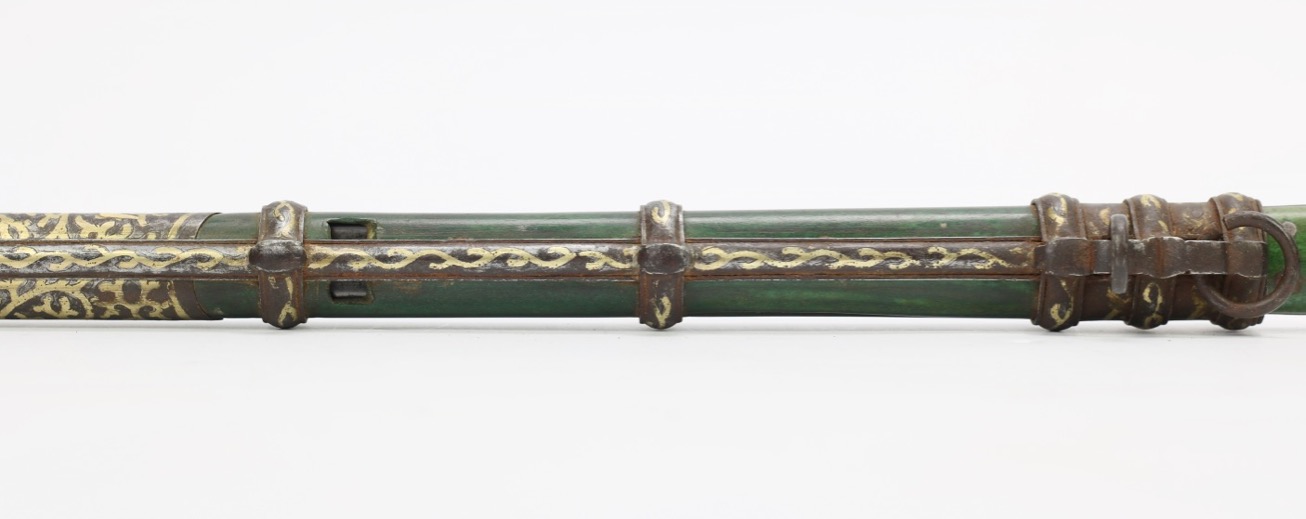
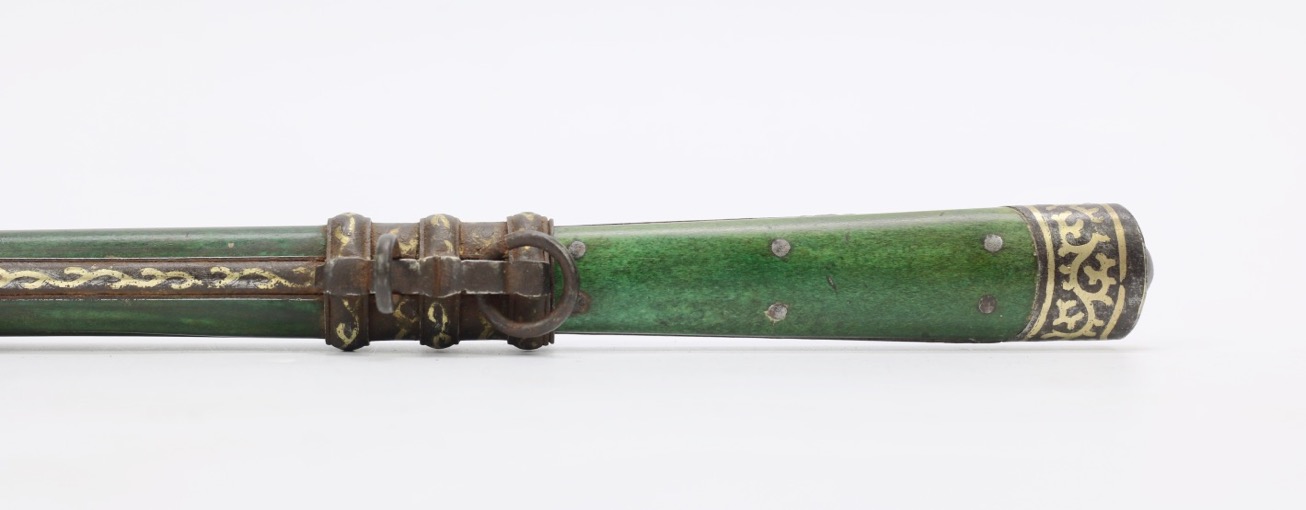
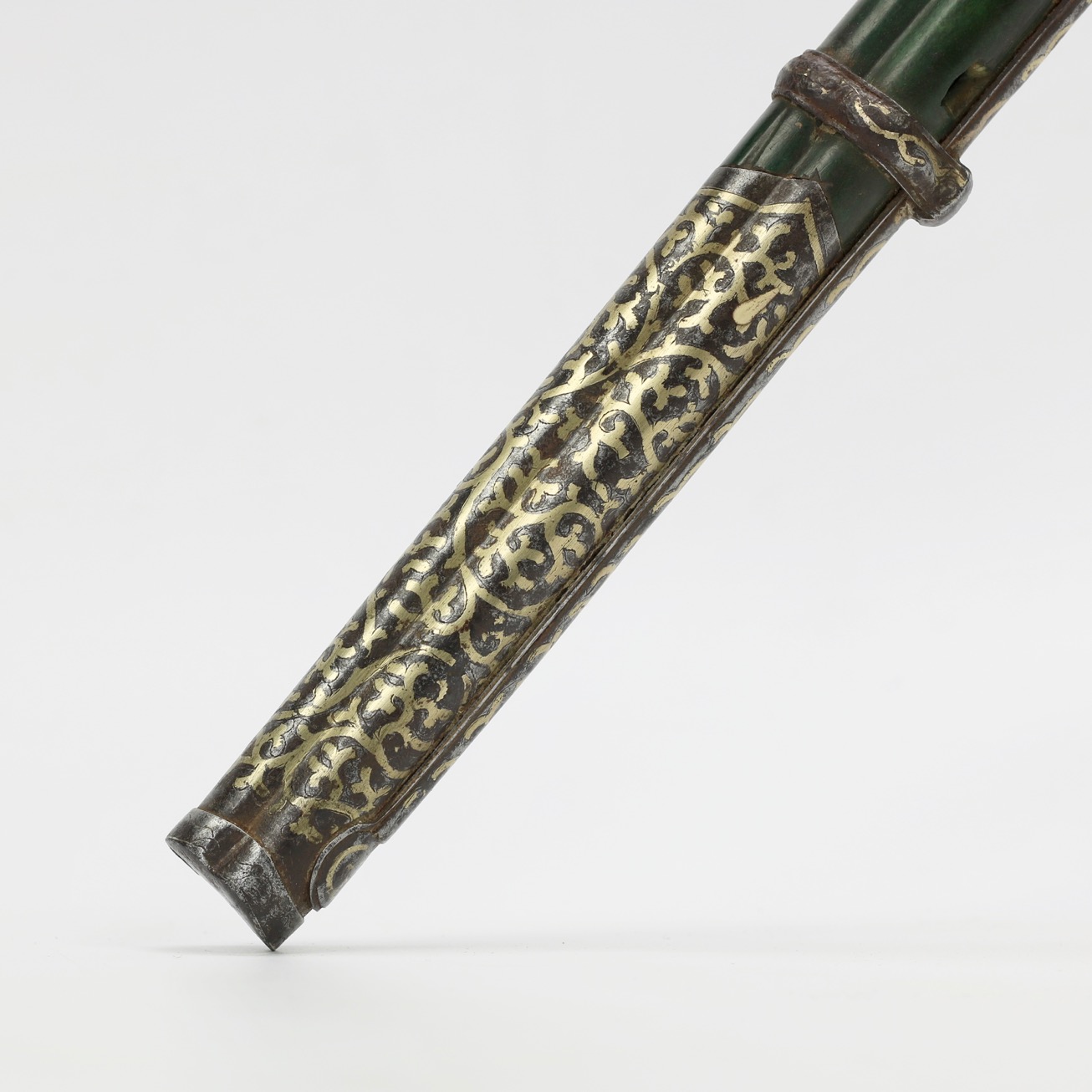
Of classic shape, with a leaf-shaped blade on a socket, connected by a cast bronze base.
A standard pattern Qing military saber, but with the rare addition of a label in Manchu.
A simple utilitarian weapon, probably made for rural martial artists or militia.
In the style of northern work of the 16th and 17th centuries
Probably of Southern origin, with a straight blade and flaring tip.

